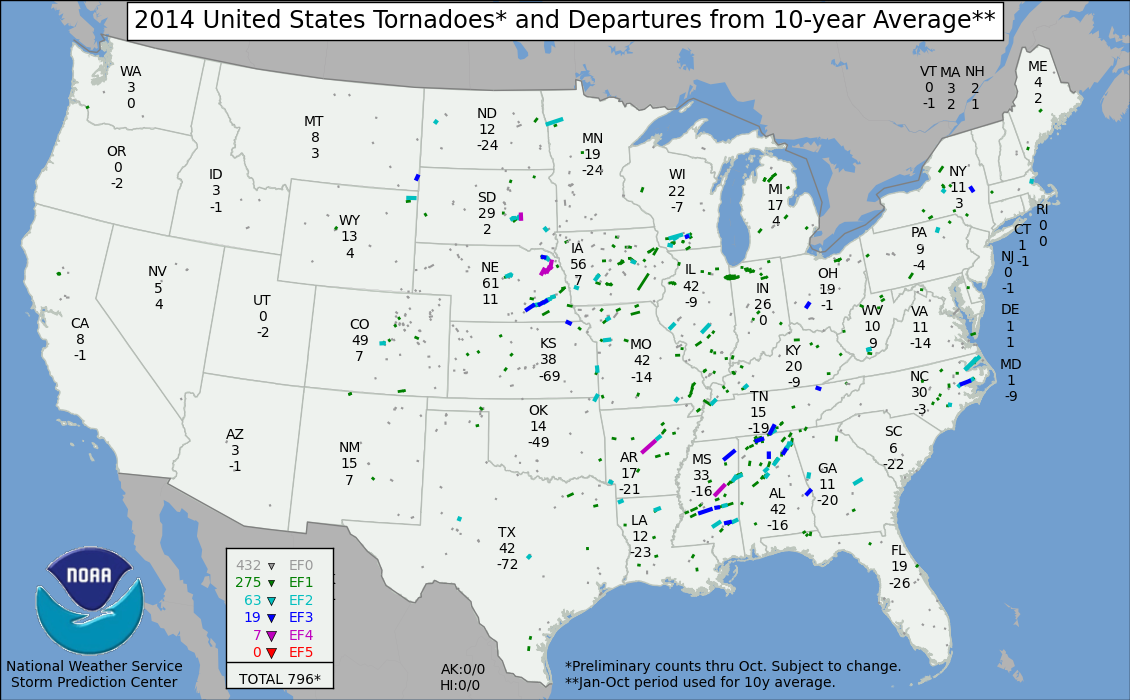Pattern can change quickly, so remain prepared
 |
| 2014 United States Tornadoes and Departures from 10-Year Average. |
Fewer tornadoes than usual occurred in the United States in 2014, making this third year in a row with below-average numbers, according to NOAA’s Storm Prediction Center.
With about 800 tornadoes through November, the preliminary 2014 count (pending final numbers for December) will be about 200 tornadoes shy of the 50 year average number of 1,000 tornadoes. This is the lowest preliminary count since 682 tornadoes occurred from January through November in 1982 and the third year in a row with fewer than 900 tornadoes.
During the past 50 years the U.S. has experienced periods of three to five consecutive years with below normal tornadoes. The most recent of these was from 1985 to 1989. However, determining patterns in the long-term record is made difficult by changes in tornado observing and reporting practices, said Greg Carbin, SPC warning coordination meteorologist.
The causes for recent tornado deficits are not entirely clear, Carbin said. Heat and drought may have curtailed tornado activity after an active period in early March in 2012. Cooler-than-normal conditions in early spring of 2013 and 2014 limited more widespread thunderstorm development, a crucial ingredient needed for tornadoes.
The deadliest and largest tornado outbreak of 2014 occurred April 27-28, when 34 people died after a total of 70 tornadoes struck the Southeast, including an EF-4 tornado that struck Vilonia, Arkansas.
Weather patterns vary significantly from year to year and season to season and it’s, therefore, uncertain if the low tornado numbers will continue into 2015.
“The conditions necessary for a tornado outbreak can come together in a matter of days,” Carbin said. “The pattern can change quickly and it is best to remain prepared, especially as spring approaches.”